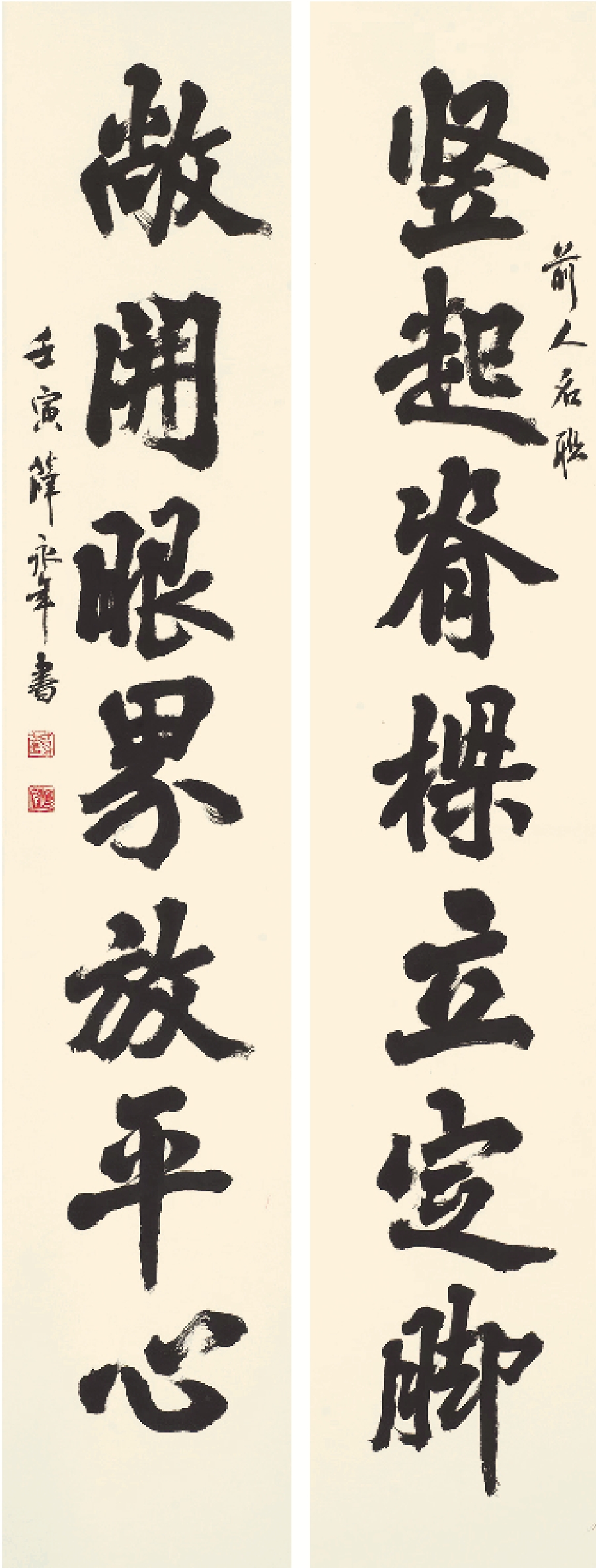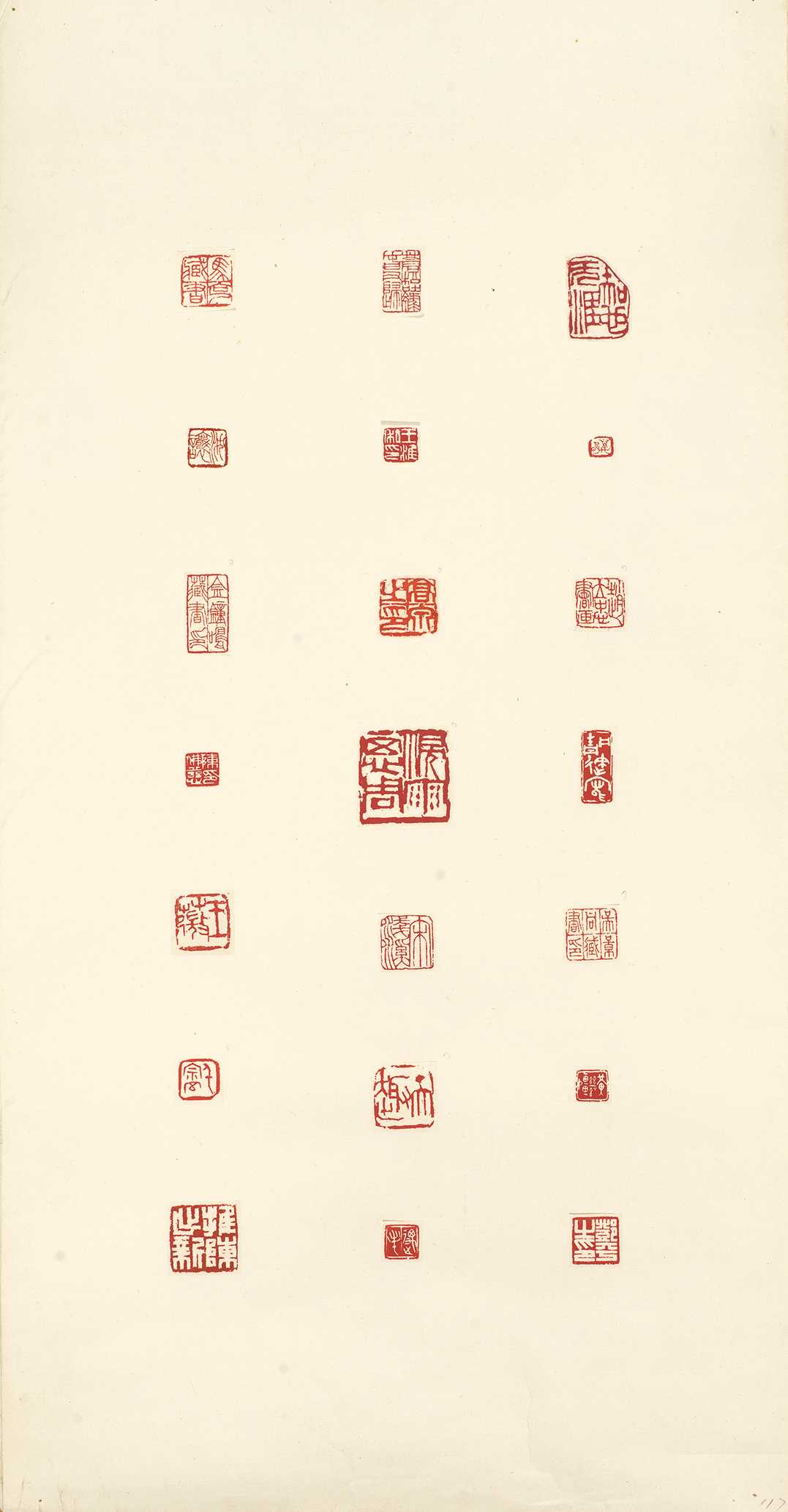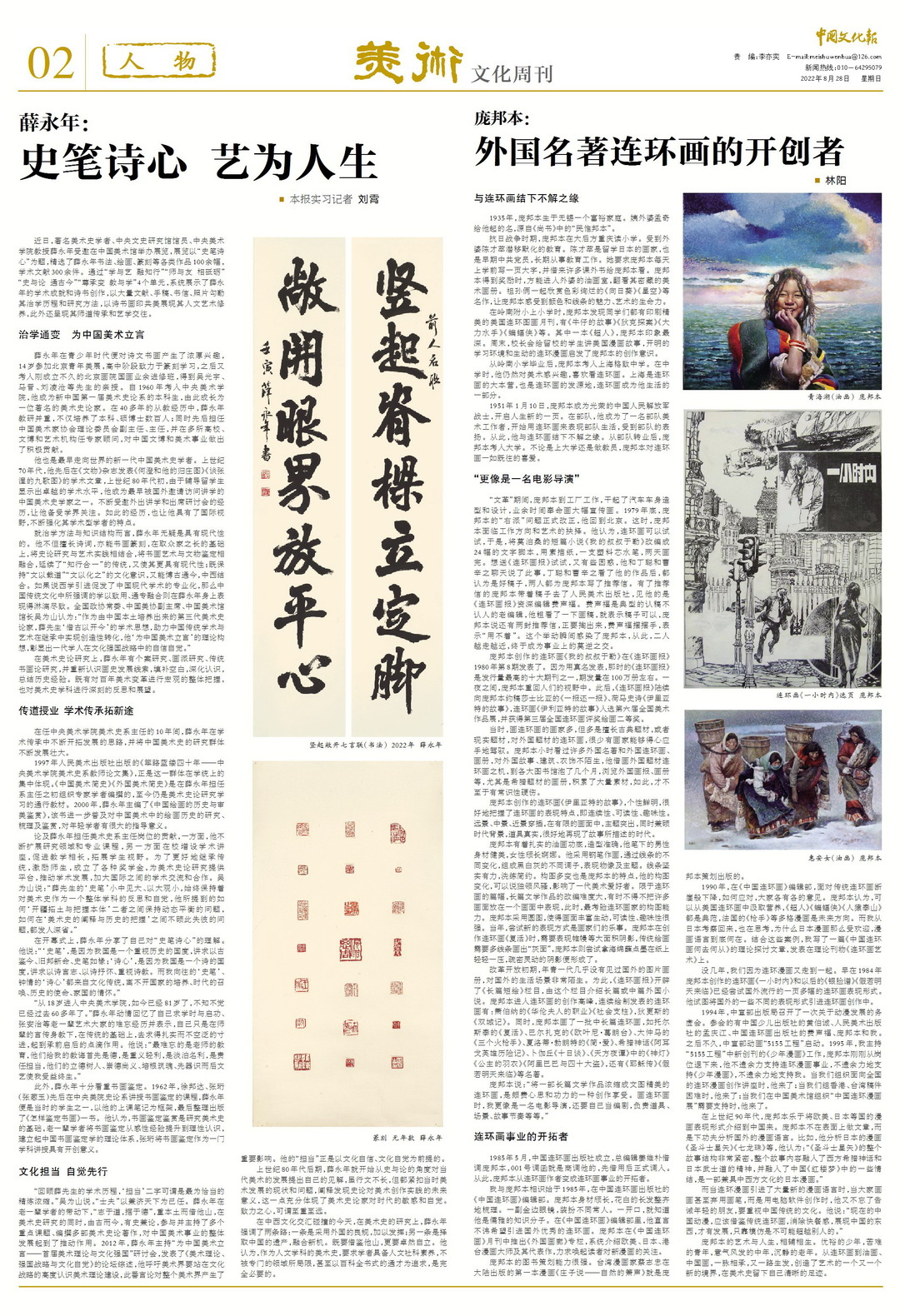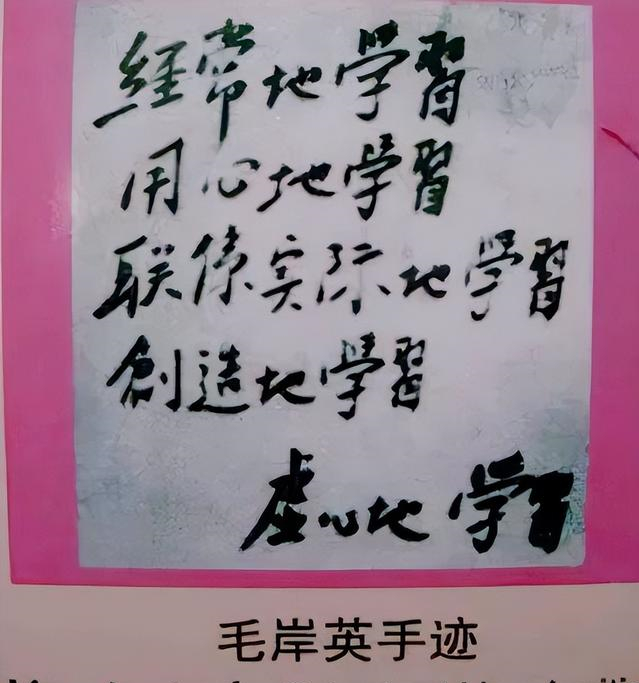Xue Yongnian: Shi Bi Shi Xinyi is life
Author:Cultural Tourism China Time:2022.08.28
Recently, Xue Yongnian, a well -known art history scholar, a member of the Central Literature and History Research Museum, and a professor at the Central Academy of Fine Arts, was invited to hold an exhibition at the Chinese Art Museum. There are more than 100 various works and more than 300 academic documents. Through the four units of "learning and art integrity", "teacher and friendly", "history and theory of ancient and modern", "respect to change teaching and learning", the system shows Xue Yongnian's academic achievements and poetry and book creation. , Manuscripts, letters, and photos outline their history and research methods, and show their cultural and artistic accomplishment with poetry, calligraphy, calligraphy and painting, and the United States. In addition, they also show their inheritance and art exchanges.



▲ Open the Seven -character Union (Calligraphy) 2022 Xue Yongnian
The academic passage becomes a Chinese art rhythm
Xue Yongnian had a strong interest in poetry, calligraphy, calligraphy and painting during his youth. At the age of 14, he participated in the Beijing Youth Aesthetic Exhibition. He was committed to engraving in high school. He was later admitted to the amateur class of Chinese painting in the Beijing Painting Academy recently established. , Liu Lingcang and others' pro -teachings. Since being admitted to the Central Academy of Fine Arts in 1960, he has become an undergraduate student at the first department of art history in New China, and has grown into a famous art historian. In the more than 40 years of teaching experience, Xue Yongnian's teaching and research has not only trained hundreds of undergraduates and doctoral doctors. Advisor has made positive contributions to the Chinese literature and art.
He is also the first new generation of Chinese art historians to the world. In the 1970s, he published an academic article of "He Cheng and his Return to Zhuang" and "Talking about Zhang Wan's Nine Song Maps" in the "Cultural Relics" magazine. At the level, he became one of the earliest Chinese art historians who were invited by foreign abroad. He was invited to go out to lecture and attend the seminar, which made him attract the attention of the academic community. Such experience also gives him an international perspective and continuously strengthen the characteristics of his academic scholars.
In terms of academic methods and knowledge structure, Xue Yongnian is undoubtedly modern. He is not only good at poetry, but also can engrave calligraphy and painting. On the basis of taking the length of the family, he combines historical research and artistic practice. It makes it more modern; not only maintains the cultural consciousness of "text to carry the way" and "literature", but also combines the combination of Chinese and Western. If the introduction of Western studies has promoted the professionalism of modern Chinese academic academics, then the application of the application and the integration of the throughout of traditional Chinese culture and the integration of the Tongzhuan will be vividly performed on Xue Yongnian. Wu Weishan, member of the Standing Committee of the National Committee of the Chinese People's Political Consultative Conference, vice chairman of the Chinese Art Association, and director of the China Art Museum, believes: "As a third -generation art historian cultivated by China, Mr. Xue's academic thoughts of" Ancient Ancient and Right "helped traditional Chinese traditions. The theoretical concept of academic and art in the inheritance of creativity, and his "making a speech for Chinese art" shows the self -confidence of a generation of scholars in the strategy of cultural power. "
In the research of art history theory, Xue Yongnian had a case research, school research, and traditional calligraphy and painting theory research, and re -understood the development clues of painting history, filling gaps, deepening awareness, and summing up historical experience. It has the overall grasp of the macro of century -old art changes, but also deeply reflects and look forward to the subject of art history.



▲ Xue Yongnian without the annual engraving
Each preaching academic inheritance Tuoxin Tu
In the 10 years of the director of the Department of Fine Arts of the Central Academy of Fine Arts, Xue Yongnian continued to develop and develop in academic inheritance, and continued to develop the research group of Chinese art history.
In 1997, the "Forty Years of Blue Ways -Teacher's Paper Collection" published by the People's Fine Arts Publishing House in 1997 is precisely the concentration of this group in the school. "A Brief History of Chinese Fine Arts" and "A Brief History of Foreign Art" was compiled by experts and scholars at the beginning of Xue Yongnian as the director of the department. It is still a general textbook for the study of art history theory. In 2000, Xue Yongnian edited the "History and Aesthetic Appreciation of Chinese Painting", which further popularized the study, sorting and appreciation of painting history in Chinese art, which has great guiding significance for young scholars.
On the contribution of Xue Yongnian as the director of the Department of Fine Arts, on the one hand, he continuously expands the fields of research and professional courses. On the other hand, he has set up academic lectures in schools to promote teaching. In order to better inherit the tradition and inspire teachers and students, various scholarships have been established to provide platforms for the research of art history theory, promote academic development, and increase academic exchanges and cooperation between international. Wu Weishan said: "Mr. Xue's" Shi Shi "is small and small, with a small view, and always maintains the reflection and consciousness of art history as an overall discipline. The problem of maintaining a dynamic balance between the two, how to make a deeper problem between the interpretation of the "interpretation of the history of art and the grasp of history ',"
At the opening ceremony, Xue Yongnian shared his understanding of "Shi Bi Poetry". He said: "'History pen' is because my country is a country that values history. Poetry and words, expressing poetry, and paying attention to poetry. And the "historical pen" I yearn for, the "poetry heart 'loved' from all coming from the cultural tradition, inseparable from the cultivation of the country, the call of the times, the mission of history, the home country, The feelings. "" I entered the Central Academy of Fine Arts from the age of 18, and now I am 81 years old, and I have been unknowingly over 60 years. "Xue Yongnian's emotional memory recalls the older generation of arts such as Qi Gong and Zhang Anzhi. Unforgettable experience also said that he was just under the teachings of the teacher, and on the basis of the traditional basis, he went to obtain a solid and universal inch, and played a bit of a bit of dripping. He said: "The most memorable thing is the teacher's education. The teachings they give me first are virtues, the lightestity and lightness, the indifferent fame and fortune, and the responsibility. , I have awareness and then the literature and art benefit me for a lifetime. "
In addition, Xue Yongnian focused on the identification of calligraphy and painting. In 1962, Xu Bangda and Zhang Yan (Zhang Jianyu) taught the course of calligraphy and painting appraisal in the Department of History of the Central Academy of Fine Arts. Book of Appraisal Painting and Calligraphy. He believes that calligraphy and painting appreciation is the basis for studying the history of art. Older scholars have raised calligraphy and painting appraisal from perceptual experience to rational understanding, and established the theoretical system of Chinese calligraphy and painting appraisal. significance.
Cultural responsibility consciously
"Looking back at Mr. Xue's academic journey, the word" responsibility "can be described as the most appropriate refining concentration." Wu Weishan said. "Scholars" take the responsibility of helping the world. Driven by the older generation of scholars, Xue Yongnian, "aspirations, according to the virtue", and borrowed the mountains and borrowed other mountains. At the same time as the research of art history, from ancient times to the present, there are history and theory. The topics and compilation of multiple art history theories have played a role in promoting the overall development of China's art industry. In 2012, Xue Yongnian presided over the seminar of "Finding Chinese Fine Arts -the First Art Theory and Cultural Power" seminar, and published a review of the forum of "Art Theory, Strategy and Cultural Consciousness". Understanding the construction of art theory, this remarks have an important impact on the entire art world. His "responsibility" is based on cultural self -confidence and cultural consciousness.
In the late 1980s, Xue Yongnian began to put forward his own opinions on the development of contemporary art from the perspective of history and theory. Although the text is not long, it is closely linked to the current status and problems of the development of art at the time. The future significance of practice fully reflects the sensitivity and consciousness of art historians on the times. The dedication is to be far away.
Today, in the collision of Chinese and Western cultural intercourse, Xue Yongnian emphasized two ways in the study of art history: one is to use foreign good rules to play; the other is to choose Chinese heritage and integrate new machines. It is necessary to learn from his mountains, but also to stand on his own. He believes that, as a history of humanities, scholars are required to have humanities and social science literacy, not limited by specialized fields, and even the pursuit of the entire encyclopedia.
"China Culture News" on August 28, 2022
The second edition published a special report
"Xue Yongnian: Shi Bi Shixin Art is Life"
↓ ↓ ↓ ↓ ↓ according to
Editor -in -chief: Chen Xiaoyue

- END -
Popular number said | Application scenarios of vertical line map

The folding diagram is a chart type commonly used in the process of data visualiza...
Mao Anying's 27 -character handwriting, the calligraphy is full of calligraphy, there is the style of the father

Seeing the handwriting left by Mao Anying's martyrs in a memorial hall, it makes p...